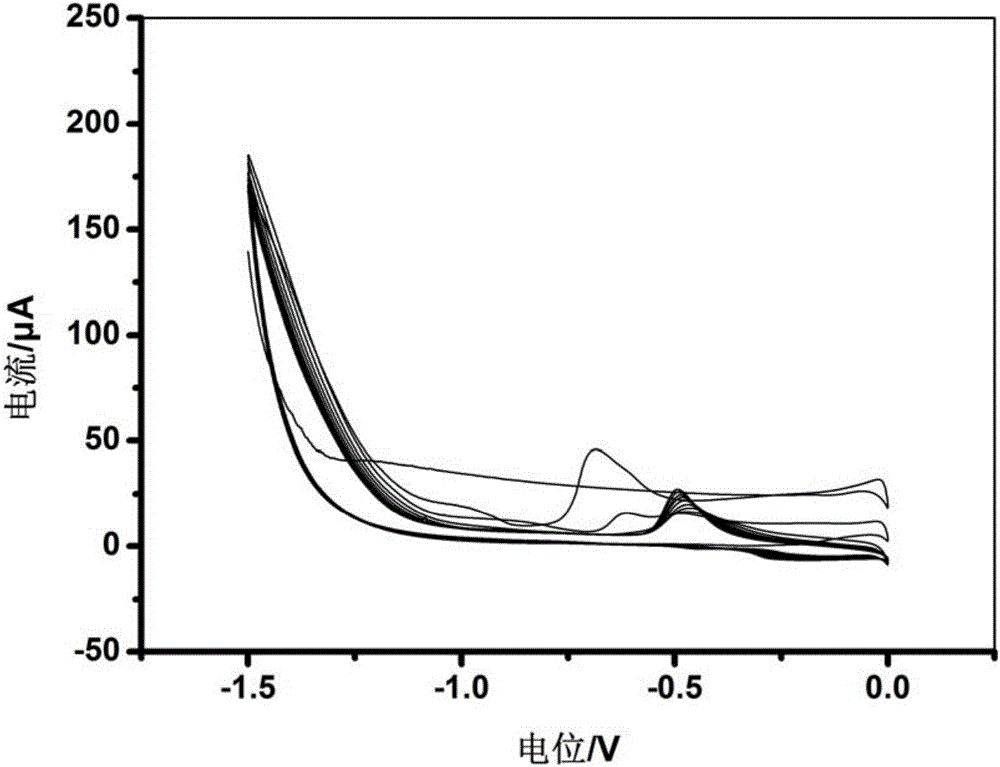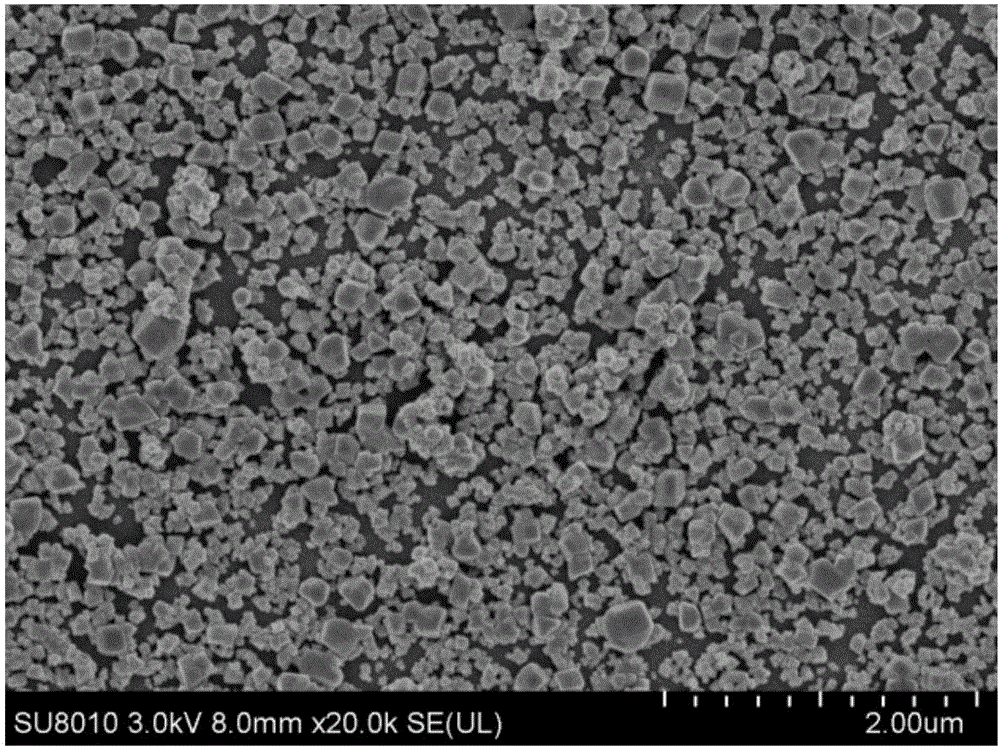A composite material modified electrode used for gallic acid concentration determination and applications thereof
A technology for modifying electrodes and composite materials, which is applied in the direction of material electrochemical variables, material analysis, and material analysis through electromagnetic means, which can solve the problems of cumbersome operation, high cost, and narrow linear range of chromatography, and improve the response current signal , enhance the electrode conductivity, reduce the effect of oxidation potential
- Summary
- Abstract
- Description
- Claims
- Application Information
AI Technical Summary
Problems solved by technology
Method used
Image
Examples
Embodiment 1
[0023] Preparation of a polyglutamic acid / copper nanocomposite modified electrode (Cu / PGA / GCE) for the determination of gallic acid comprises the following steps:
[0024] (1) Glassy carbon electrode pretreatment: use α-Al with a particle size of 300nm and 50nm in sequence on the suede 2 o 3 Polish the glassy carbon electrode to the mirror surface with the paste polishing solution, then use absolute ethanol and deionized water to ultrasonically wash the electrode for 1min, and then place the cleaned glassy carbon electrode in 0.5mol / L dilute sulfuric acid solution, in- The 0.5-1.2V potential range was activated by cyclic voltammetry at a scan rate of 100mV / s until the response was stable. Finally, the glassy carbon electrode was rinsed with deionized water and dried for later use.
[0025] (2) Before modifying the glassy carbon electrode, the electrode needs to be at 1mmol / L K 3 [Fe(CN) 6 ] solution (containing 0.1mol / L KCl) to conduct cyclic voltammetry scanning to verify ...
Embodiment 2
[0037] Preparation of a polyglutamic acid / copper nanocomposite modified electrode (Cu / PGA / GCE) for the determination of gallic acid comprises the following steps:
[0038] (1) Glassy carbon electrode pretreatment: use paste polishing solution with a particle size of 300nm and 50nmα-Al2O3 on the suede to polish the glassy carbon electrode to the mirror surface, and then apply absolute ethanol and deionized water to ultrasonically wash the electrode for 90s , and then place the cleaned glassy carbon electrode in 0.6mol / L dilute sulfuric acid solution, perform cyclic voltammetry activation at a sweep rate of 120mV / s in the potential range of -0.6~1.3V, until the response is stable, and finally deionized Rinse the glassy carbon electrode with water and dry it for later use.
[0039] (2) The pretreated glassy carbon electrode was placed in a 0.015 mol / L copper sulfate solution (containing 0.05 mol / L sodium sulfate), and electrodeposition was performed by cyclic voltammetry. In the...
Embodiment 3
[0043] Preparation of a polyglutamic acid / copper nanocomposite modified electrode (Cu / PGA / GCE) for the determination of gallic acid comprises the following steps:
[0044] (1) Glassy carbon electrode pretreatment: use paste polishing solutions with particle sizes of 300nm and 50nmα-Al2O3 on the suede to polish the glassy carbon electrode to the mirror surface, and then apply absolute ethanol and deionized water to ultrasonically wash the electrode for 2min , and then place the cleaned glassy carbon electrode in 0.7mol / L dilute sulfuric acid solution, perform cyclic voltammetry activation at a sweep rate of 140mV / s in the potential range of -0.6~1.5V, until the response is stable, and finally deionized Rinse the glassy carbon electrode with water and dry it for later use.
[0045] (2) The pretreated glassy carbon electrode was placed in a 0.02mol / L copper sulfate solution (containing 0.15mol / L sodium sulfate), and electrodeposition was performed by cyclic voltammetry. Within t...
PUM
| Property | Measurement | Unit |
|---|---|---|
| particle diameter | aaaaa | aaaaa |
| particle diameter | aaaaa | aaaaa |
Abstract
Description
Claims
Application Information
 Login to View More
Login to View More - R&D
- Intellectual Property
- Life Sciences
- Materials
- Tech Scout
- Unparalleled Data Quality
- Higher Quality Content
- 60% Fewer Hallucinations
Browse by: Latest US Patents, China's latest patents, Technical Efficacy Thesaurus, Application Domain, Technology Topic, Popular Technical Reports.
© 2025 PatSnap. All rights reserved.Legal|Privacy policy|Modern Slavery Act Transparency Statement|Sitemap|About US| Contact US: help@patsnap.com



